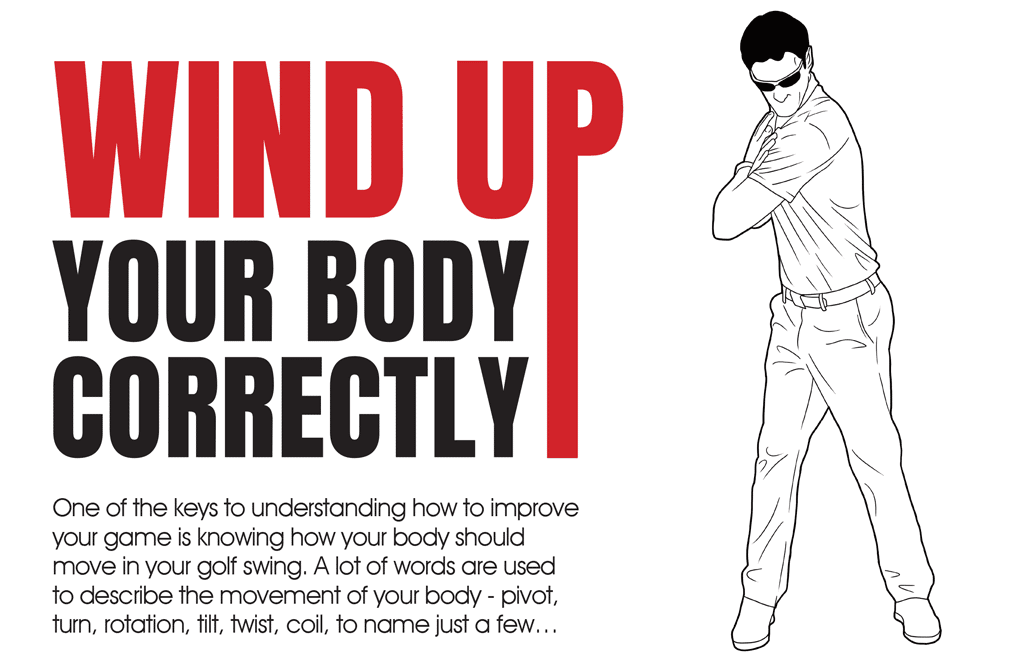By Stephen Moriarty
One of the keys to understanding how to improve your game is knowing how your body should move in your golf swing. A lot of words are used to describe the movement of your body – pivot, turn, rotation, tilt, twist, coil, to name just a few…
Whatever you do though, it has to put you in a position where you can create speed in your downswing, and leave you needing minimal compensations to hit the ball consistently.
The term I use with students to describe the body movements in the backswing is ‘winding up’. This places an emphasis on creating a stretch; we are not trying to position the body in a tight, overly tense position, but we do want to feel like there is a stretching of the muscles in the center of your body. The wind up should also be done without too much twist, lateral movement, or tilt. Below are examples of backswings which are all wrong because they have too much of those movements.
It’s important at this stage that you understand weight movements; shift is a terrible word to describe how weight should move since it makes the golfer think they have to move all their weight in a direction. Think of it as pressure; as you wind up in the backswing you increase the pressure in your right heel. This is vital for making a downswing which you can create speed from.
Try this simple backswing exercise to help you understand what you body should be doing:
- Take your golf stance for a 7-iron and place your hands on you belly.
- Feel that the right hip and shoulder go up and backwards.
- Increase the pressure you feel in your right heel.
- You should sense a stretching in your abdominal muscles and the outside of your right leg.
This is a great exercise for practicing at the golf course and in the office or at home.









